So excited to see this work on data-driven selection of overlapping community detection algorithms out!
I started working on this as an undergrad many years ago, thanks to @anniegbryant.bsky.social for leading the final push!
21.03.2025 02:38 — 👍 6 🔁 0 💬 0 📌 0
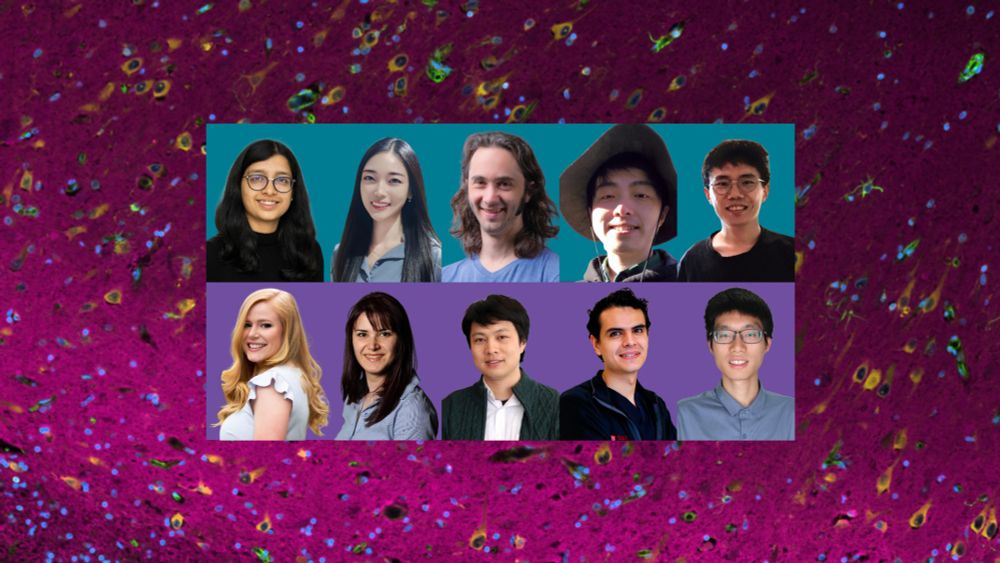
Meet the 2025 Neurosciences Postdoctoral Scholars
How does the brain wire itself for learning? What molecular mechanisms protect neural circuits during
From engineering targeted therapies for brain tumors to studying neural resilience in aging, the 2025 Neurosciences Postdoctoral Scholars are exploring bold new questions in neuroscience. Meet the researchers and learn about their innovative projects: neuroscience.stanford.edu/news/meet-20...
20.02.2025 18:19 — 👍 4 🔁 2 💬 0 📌 0
Huge shoutout to @dikshagup.bsky.social who collected this data and whose work motivated us to go down this route in the first place. Check out her recent work which excitingly aligns with our findings about ADS and FOF communication: www.biorxiv.org/content/10.1...
Stay tuned for more on this!
06.12.2024 14:39 — 👍 1 🔁 0 💬 0 📌 0
As a bonus: we also show theoretical equivalence under special cases with an EI-RNN, and that our model can be used to infer cell-type identity!
06.12.2024 14:39 — 👍 0 🔁 0 💬 1 📌 0
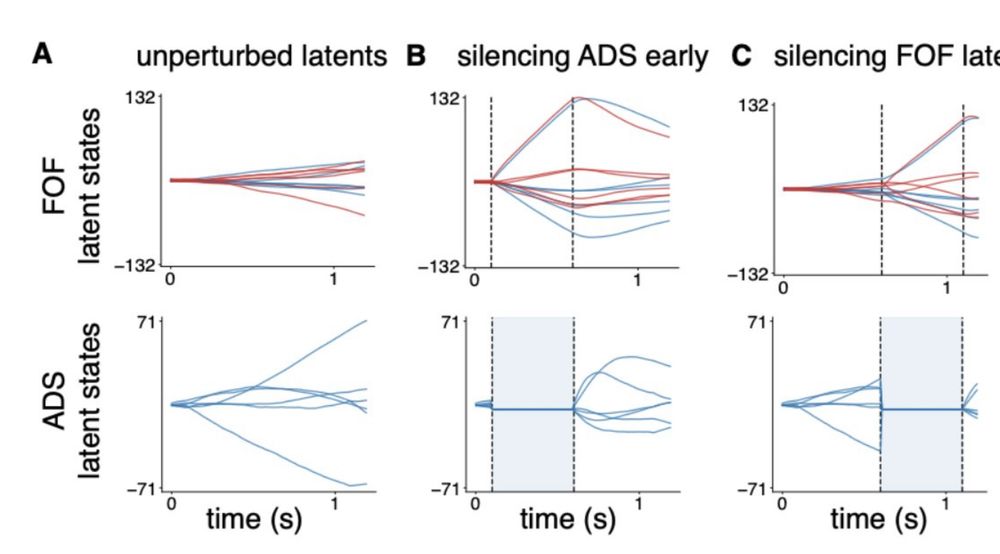
However, ADS silencing derails dynamics of the FOF, during both early and late stages explaining the observed biased behavior. This finding also implicates a necessary role for the feedforward connection from ADS to FOF in evidence accumulation.
06.12.2024 14:39 — 👍 0 🔁 0 💬 1 📌 0
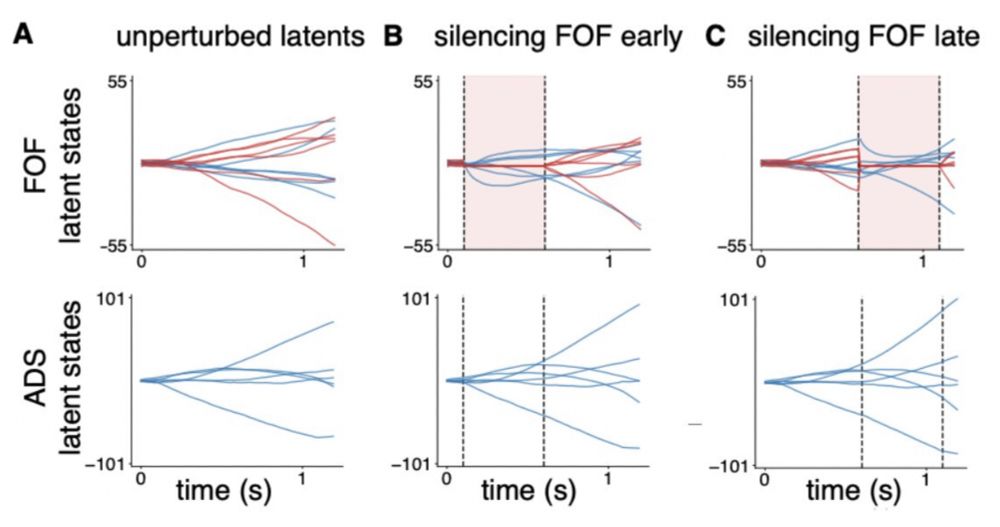
This is particularly exciting as we could then use CTDS to visualize latent dynamics of both regions / cell-types and see how they change under these perturbations. Early FOF silencing has short-lived effect on dynamics of both regions, thus causing no behavioral deficit.
06.12.2024 14:39 — 👍 2 🔁 0 💬 1 📌 0

Remarkably, in both cases (silencing E neurons in FOF, and I neurons in ADS), predictions of our model aligned with previous experimental results (from Hanks et al. and Yartsev et al), while that of a standard LDS did not!
(Note that we did not fit the model on perturbed data.)
06.12.2024 14:39 — 👍 1 🔁 0 💬 1 📌 0
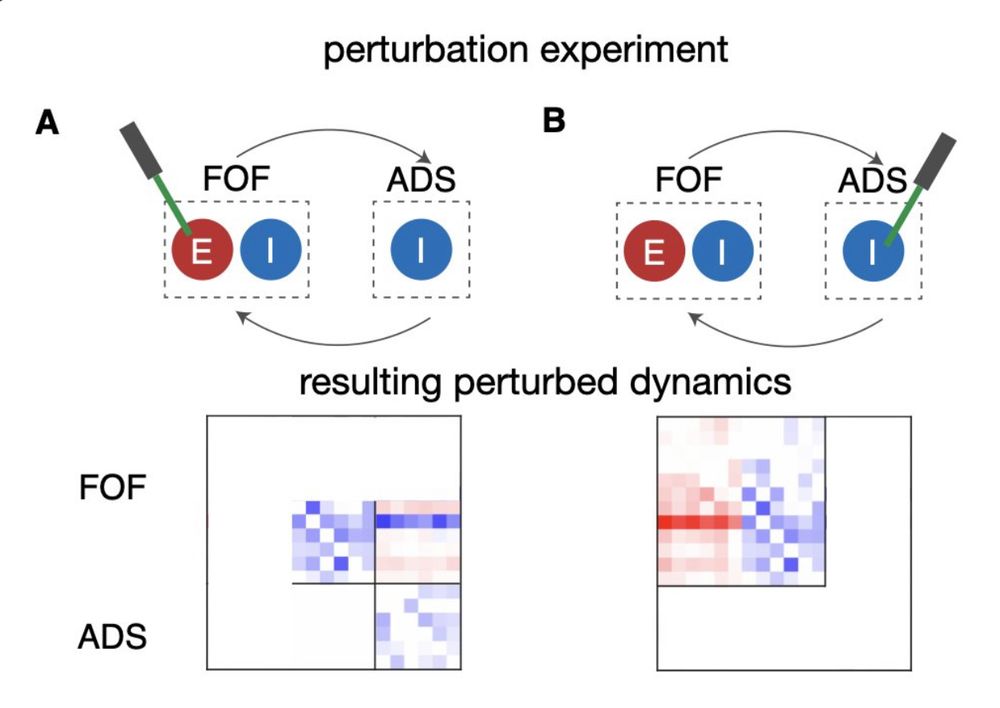
We next used fitted CTDS model to perform in-silico cell-specific perturbations in both regions. The biologically constrained dynamics allows us to model perturbations easily, by shutting down latents corresponding to the perturbed cell-type.
06.12.2024 14:39 — 👍 0 🔁 0 💬 1 📌 0
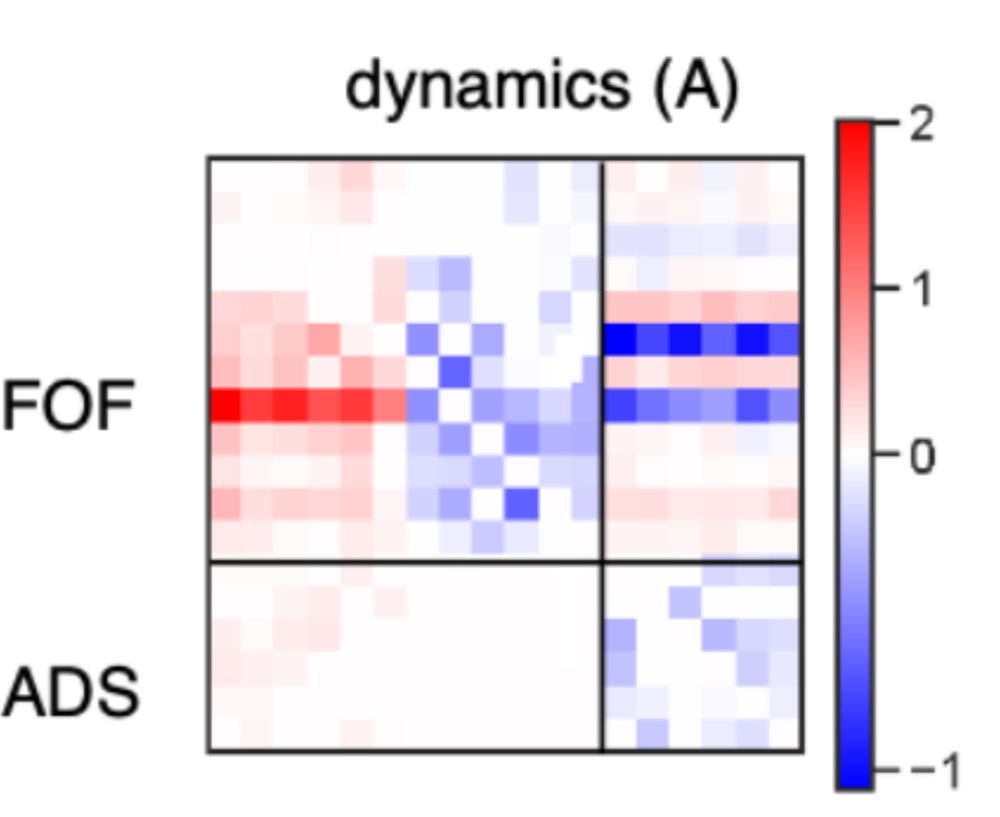
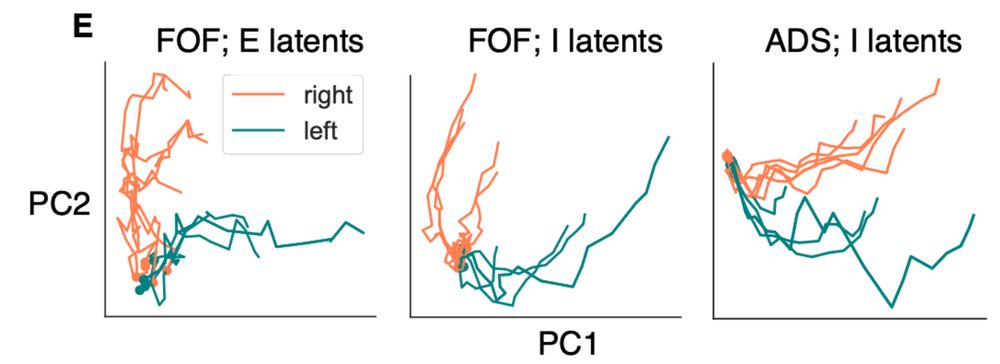
When applied to simultaneous recordings from FOF and ADS (two regions involved in evidence accumulation) in rodents during an auditory clicks task, CTDS dynamics show that both regions communicate bidirectionally, and that both E and I cells encode choice information.
06.12.2024 14:39 — 👍 0 🔁 0 💬 1 📌 0
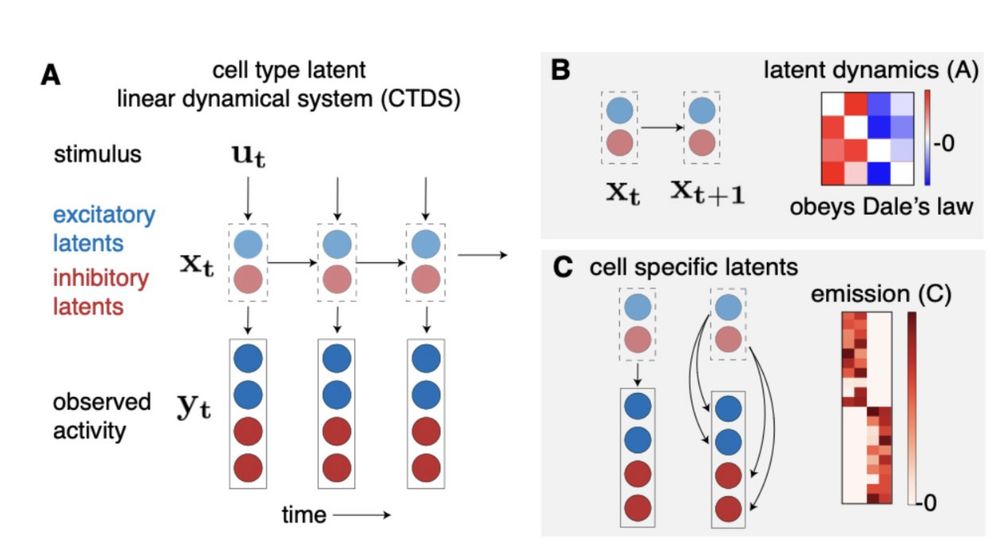
Our model builds up on linear dynamical systems to contain distinct latent variables for distinct cell classes, with biologically inspired constraints on both dynamics and emission—this allows for disentangling cell-specific dynamics.
We also extend it to multi-region settings!
06.12.2024 14:39 — 👍 1 🔁 1 💬 1 📌 0
Paper: www.biorxiv.org/content/10.1...
Code: github.com/97aditi/Cell...
06.12.2024 14:39 — 👍 3 🔁 0 💬 1 📌 0
Excited to share our NeurIPS spotlight paper that develops cell-type dynamical systems to understand the effects of neural perturbations, and roles of distinct cell classes in a neural circuit!
Joint work w/ @dikshagup.bsky.social , Carlos Brody, @jpillowtime.bsky.social .
(Details below)
06.12.2024 14:39 — 👍 36 🔁 7 💬 3 📌 2
PhD Student, Stony Brook University | Neuroscience, Science Communication.
Address all correspondence to Dr. SissyFuss, Valley of Despair, Dunning-Kruger Curve. Waiting for the boulder to roll back down.
I lead the Dynamics and Neural Systems Group at the School of Physics, the University of Sydney.
We develop time series tools & physical models to understand the dynamics of complex (usually neural) systems.
Also: @bendfulcher@fediscience.org
PhD candidate in the Dynamics and Neural Systems Lab at The University of Sydney 🧠
I'm probs either biking, hammocking, and/or caffeinating rn ☀️🌻
Postdoc @harvard.edu @kempnerinstitute.bsky.social
Homepage: http://satpreetsingh.github.io
Twitter: https://x.com/tweetsatpreet
Chief AI Scientist at Databricks. Founding team at MosaicML. MIT/Princeton alum. Lottery ticket enthusiast. Working on data intelligence.
Computational neuroscientist || Postdoc with Tim Behrens || Sainsbury Wellcome Centre @ UCL
Computational neuroscience, neuroML, natural behavior. I charge more for miracles. PI @ pearsonlab.github.io. @dukemedschool.bsky.social.
asst prof @Stanford linguistics | director of social interaction lab 🌱 | bluskies about computational cognitive science & language
Studying multi-agent collaboration 🤝🧩🤖
PhD Candidate at Princeton CS with Tom Griffiths & Natalia Vélez @cocoscilab.bsky.social @velezcolab.bsky.social
Prev: Cornell CS, MIT BCS
https://ysanchezaraujo.github.io/
Associate Prof at UW. Neural interfaces, motor learning, engineering learning.
Believe it or not, my last name has two R's and zero E's.
She/her
@Penn Prof, deep learning, brains, #causality, rigor, http://neuromatch.io, Transdisciplinary optimist, Dad, Loves outdoors, 🦖 , c4r.io
|| assistant prof at University of Montreal || leading the systems neuroscience and AI lab (SNAIL: https://www.snailab.ca/) 🐌 || associate academic member of Mila (Quebec AI Institute) || #NeuroAI || vision and learning in brains and machines
Professor of Neurosurgery, Baylor College of Medicine
Neuroscientist, in theory. Studying sleep and navigation in 🧠s and 💻s.
Assistant Professor at Yale Neuroscience, Wu Tsai Institute.
An emergent property of a few billion neurons, their interactions with each other and the world over ~1 century.
• Asst. Professor @ Vanderbilt BME
• HHMI Hanna Gray Fellow
• Neurotechnology & BMIs
• Technically a physicist
• Husband • Dad • BBQ • Texan • he/him
https://gonzales.science/
🏳️🌈🧠🔬🚴♀️ Neuroscientist. Associate Director of Data and Outreach at Allen Institute for Neural Dynamics. Focused on how we do Science in the Open. She/her.
sports and neuroscience hot takes








